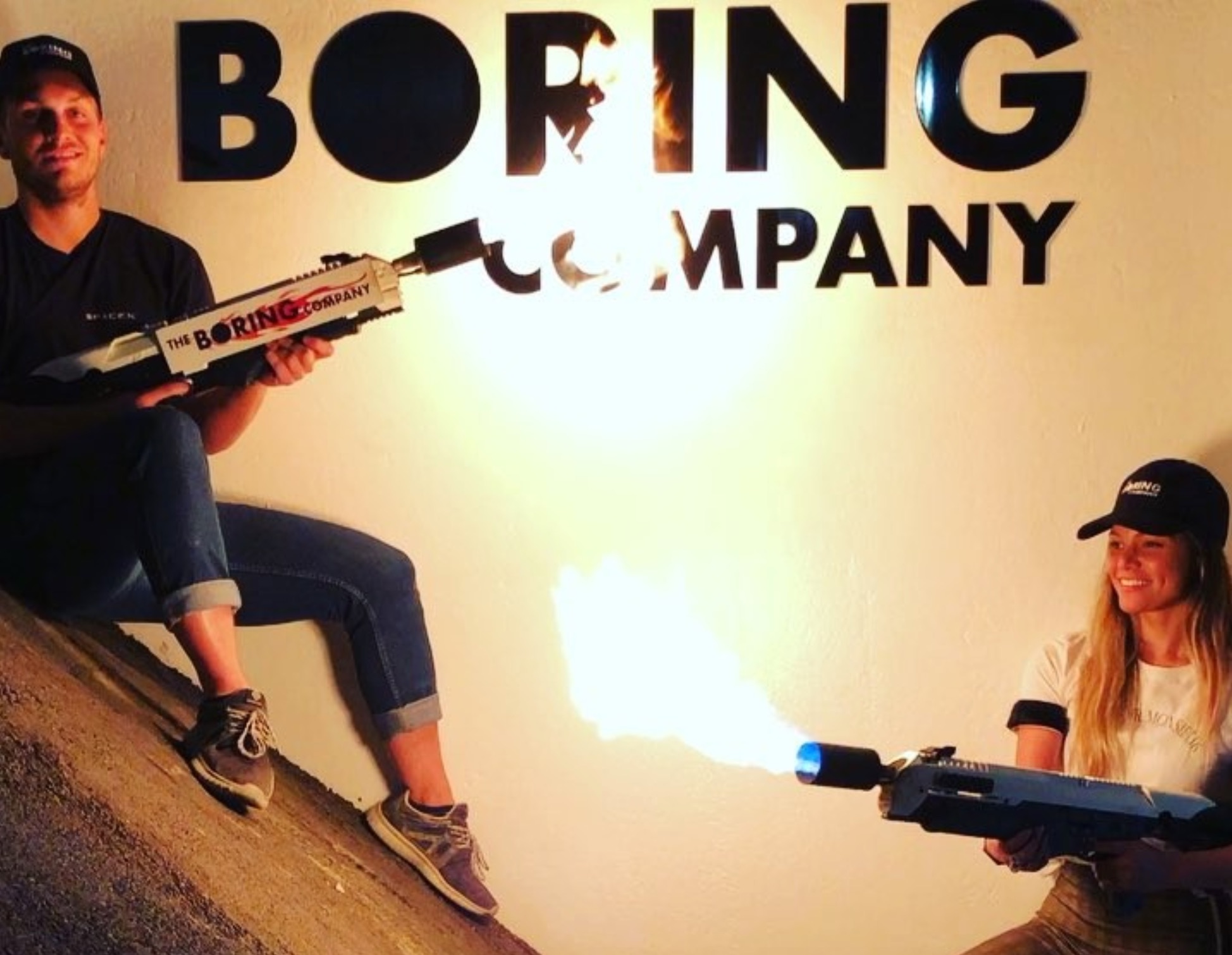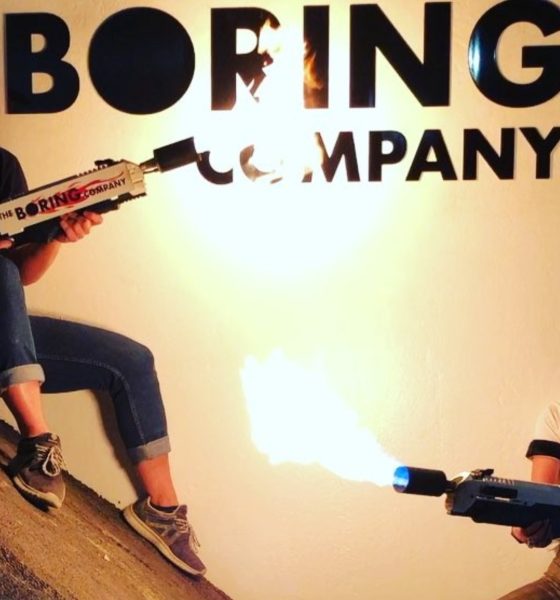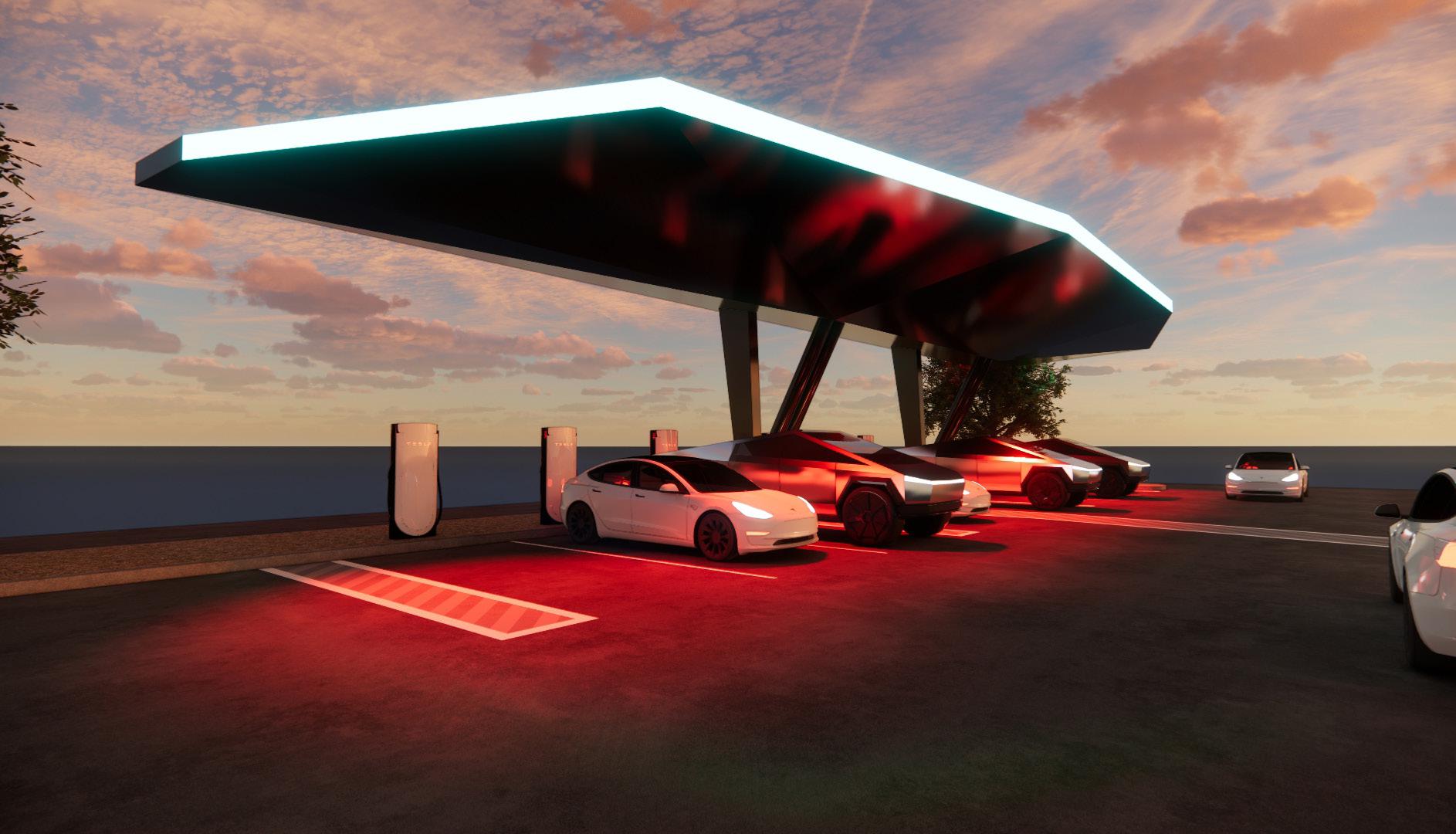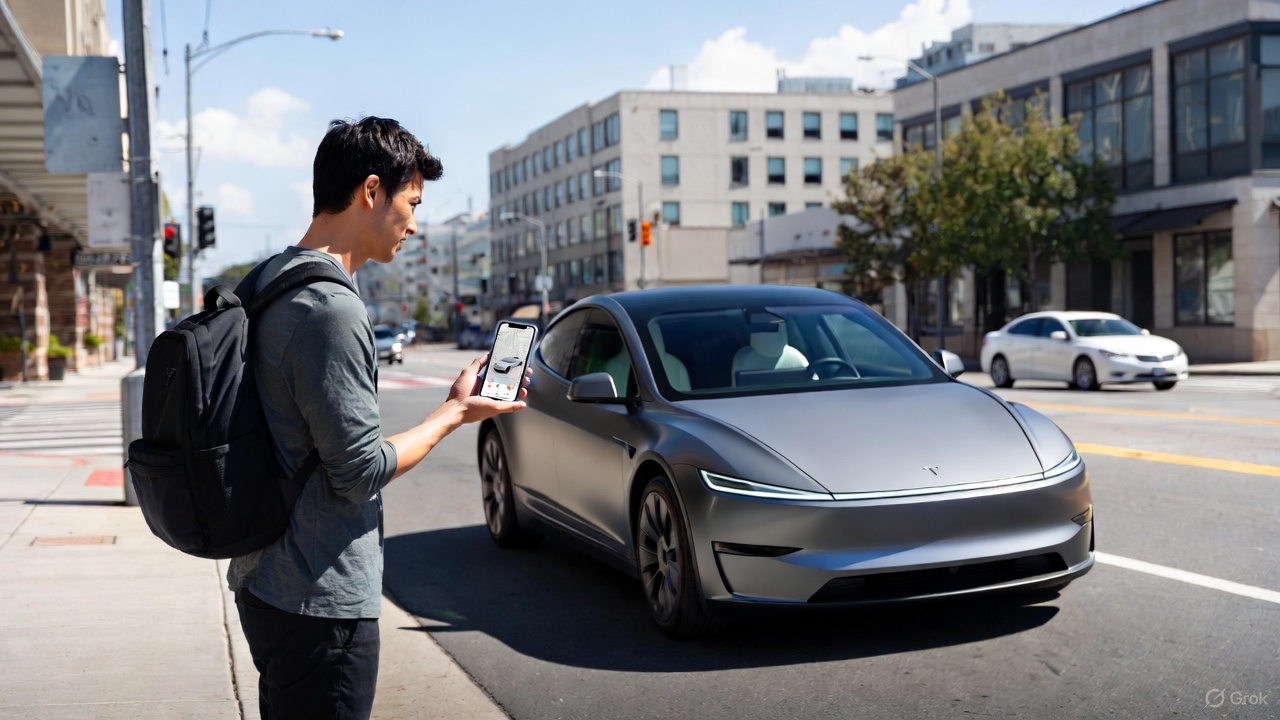

News
The Boring Co. is holding a Not-a-Flamethrower pickup party on June 9
In an update on Saturday, Elon Musk announced that The Boring Company would be holding a Not-a-Flamethrower pickup party in Los Angeles on June 9.
During The Boring Company’s information session earlier this month, Elon Musk, together with SpaceX engineer Steve Davis, stated that the delivery and shipment of the Not-a-Flamethrowers were delayed since shipping items with propane proved to be complicated. Thus, according to Musk, the Boring Co. has come up with a solution to its shipping problems — the company will custom-deliver the Not-a-Flamethrowers to the homes of reservation holders.
About to ship. @BoringCompany holding flamethrower pickup parties in a week or so, then deliveries begin. Check https://t.co/WTl3TOTOkt for details.
— Elon Musk (@elonmusk) May 26, 2018
As it turns out, however, the Boring Company has an extra surprise before it starts delivering the fiery device. As could be seen in a recently shared screenshot of a correspondence from the tunneling startup (credit to u/Herbrax212 of the r/BoringCompany subreddit), a pick-up party for the first 1,000 Not-a-Flamethrowers would be held in Los Angeles on June 9. Following is an excerpt from the email that The Boring Company recently sent out to reservation holders.
Anyways… we are hosting a Not-a-Flamethrower pickup party in Los Angeles on June 9, 2018, from noon to 5 pm. Up to 1,000 customers can pick up their Not-a-Flamethrower, toast some marshmallows, take some fun pics, prep to take on a zombie horde, and (of course) receive a refund for their shipping charges. Only eligible customers who have signed the terms and conditions and have registered at www.boringcompany.com/pickup may attend. Don’t worry if you can’t make it; all Not-a-Flamethrowers will ship out this summer!
Where should we throw our next pick up party?
The Boring Company
The Boring Company Not-a-Flamethrower started off as a joke from Elon Musk and yet another reference to Hollywood sci-fi flick Spaceballs. In a tweet last December, Musk stated that the tunneling startup would release a flamethrower after selling its 50,000th Boring Company hat. Sure enough, after the inventory of the hats were cleared out, signs of the Boring Company Flamethrower started emerging.
By January, musician D.A. Wallach shared a video of the fiery device on his Instagram page. Not long after that, Elon Musk officially launched the Flamethrower in the Boring Company’s website, selling the contraption for $500 each. All 20,000 Boring Company Flamethrowers were sold out within four days, raising $10 million for the tunneling startup.
The device, however, did not come without its detractors. California assemblyman Miguel Santiago (D-Los Angeles), for one, expressed his opposition to the device, citing its safety concerns. Customs agencies also stated that they would not ship anything that is branded as a flamethrower. In response to this, Musk opted to rebrand the fiery device, calling it a Not-a-Flamethrower.
While the Boring Company Not-a-Flamethrower looks like a powerful firestarter, the device is actually more akin to a propane torch fitted on what appears to be a modified airsoft rifle. Considering that the device can only shoot flames up to a few feet, the Not-a-Flamethrower is actually more similar to a Weed Dragon, which could be purchased in any hardware store, than an actual flamethrower such as the XM42-M, which can shoot flames up to 30 feet.

News
Tesla gamifies Supercharging with new ‘Charging Passport’
It will also include things like badges for special charging spots, among other metrics that will show all of the different places people have traveled to plug in for range.

Tesla is gamifying its Supercharging experience by offering a new “Charging Passport,” hoping to add a new layer to the ownership experience.
While it is not part of the Holiday Update, it is rolling out around the same time and offers a handful of cool new features.
Tesla’s Charging Passport will be available within the smartphone app and will give a yearly summary of your charging experience, helping encapsulate your travel for that year.
It will also include things like badges for special charging spots, among other metrics that will show all of the different places people have traveled to plug in for range.
Tesla has just introduced “Charging Passport,” a new yearly summary of your charging.
• Charging badges: Iconic Charging badge (for visiting places like the Tesla Diner, Oasis Supercharger, etc), Explorer badge, green saver badge, etc.
• Total unique Superchargers visited
•… pic.twitter.com/c1DHTWXpj7— Sawyer Merritt (@SawyerMerritt) December 8, 2025
Tesla will include the following metrics within the new Charging Passport option within the Tesla app:
- Charging badges: Iconic charging badges for visiting places like the Tesla Diner, Oasis Supercharger, etc., Explorer Badge, and more
- Total Unique Superchargers Visited
- Total Charging Sessions
- Total Miles Added during Charging Sessions
- Top Charging Day
- Longest Trip
- Favorite Charging Locations
This will give people a unique way to see their travels throughout the year, and although it is not necessarily something that is needed or adds any genuine value, it is something that many owners will like to look back on. After all, things like Spotify Wrapped and Apple Music Replay have been a great way for people to see what music they listened to throughout the year.
This is essentially Tesla’s version of that.
With a handful of unique Superchargers already active, Tesla is also building some new ones, like a UFO-inspired location in New Mexico, near Roswell.
Tesla is building a new UFO-inspired Supercharger in the heart of Alien country
News
Tesla launches its coolest gift idea ever just a few weeks after it was announced
“Gift one month of Full Self-Driving (Supervised), which allows the vehicle to drive itself almost anywhere with minimal intervention.”

Tesla has launched its coolest gift idea ever, just a few weeks after it was announced.
Tesla is now giving owners the opportunity to gift Full Self-Driving for one month to friends or family through a new gifting program that was suggested to the company last month.
The program will enable people to send a fellow Tesla owner one month of the company’s semi-autonomous driving software, helping them to experience the Full Self-Driving suite and potentially help Tesla gain them as a subscriber of the program, or even an outright purchase.
Tesla is going to allow owners to purchase an FSD Subscription for another owner for different month options
You’ll be able to gift FSD to someone! https://t.co/V29dhf5URj
— TESLARATI (@Teslarati) November 3, 2025
Tesla has officially launched the program on its Shop. Sending one month of Full Self-Driving costs $112:
“Gift one month of Full Self-Driving (Supervised), which allows the vehicle to drive itself almost anywhere with minimal intervention. All sales are final. Can only be purchased and redeemed in the U.S. This gift card is valued at $112.00 and is intended to cover the price of one month of FSD (Supervised), including up to 13% sales tax. It is not guaranteed to cover the full monthly price if pricing or tax rates change. This gift card can be stored in Tesla Wallet and redeemed toward FSD (Supervised) or any other Tesla product or service that accepts gift card payments.”
Tesla has done a great job of expanding Full Self-Driving access over the past few years, especially by offering things like the Subscription program, free trials through referrals, and now this gift card program.
Gifting Full Self-Driving is another iteration of Tesla’s “butts in seats” strategy, which is its belief that it can flip consumers to its vehicles and products by simply letting people experience them.
There is also a reason behind pushing Full Self-Driving so hard, and it has to do with CEO Elon Musk’s compensation package. One tranche requires Musk to achieve a certain number of active paid Full Self-Driving subscriptions.
More people who try the suite are likely to pay for it over the long term.
News
Tesla expands Robotaxi app access once again, this time on a global scale
Tesla said recently it plans to launch Robotaxi in Miami, Houston, Las Vegas, Phoenix, and Dallas.

Tesla has expanded Robotaxi app access once again, but this time, it’s on a much broader scale as the company is offering the opportunity for those outside of North America to download the app.
Tesla Robotaxi is the company’s early-stage ride-hailing platform that is active in Texas, California, and Arizona, with more expansion within the United States planned for the near future.
Tesla said recently it plans to launch Robotaxi in Miami, Houston, Las Vegas, Phoenix, and Dallas.
The platform has massive potential, and Tesla is leaning on it to be a major contributor to even more disruption in the passenger transportation industry. So far, it has driven over 550,000 miles in total, with the vast majority of this coming from the Bay Area and Austin.
First Look at Tesla’s Robotaxi App: features, design, and more
However, Tesla is focusing primarily on rapid expansion, but most of this is reliant on the company’s ability to gain regulatory permission to operate the platform in various regions. The expansion plans go well outside of the U.S., as the company expanded the ability to download the app to more regions this past weekend.
So far, these are the areas it is available to download in:
- Japan
- Thailand
- Hong Kong
- South Korea
- Australia
- Taiwan
- Macau
- New Zealand
- Mexico
- U.S.
- Canada
Right now, while Tesla is focusing primarily on expansion, it is also working on other goals that have to do with making it more widely available to customers who want to grab a ride from a driverless vehicle.
One of the biggest goals it has is to eliminate safety monitors from its vehicles, which it currently utilizes in Austin in the passenger’s seat and in the driver’s seat in the Bay Area.
A few weeks ago, Tesla started implementing a new in-cabin data-sharing system, which will help support teams assist riders without anyone in the front of the car.
Tesla takes a step towards removal of Robotaxi service’s safety drivers
As Robotaxi expands into more regions, Tesla stands to gain tremendously through the deployment of the Full Self-Driving suite for personal cars, as well as driverless Robotaxis for those who are just hailing rides.
Things have gone well for Tesla in the early stages of the Robotaxi program, but expansion will truly be the test of how things operate going forward. Navigating local traffic laws and gaining approval from a regulatory standpoint will be the biggest hurdle to jump.








